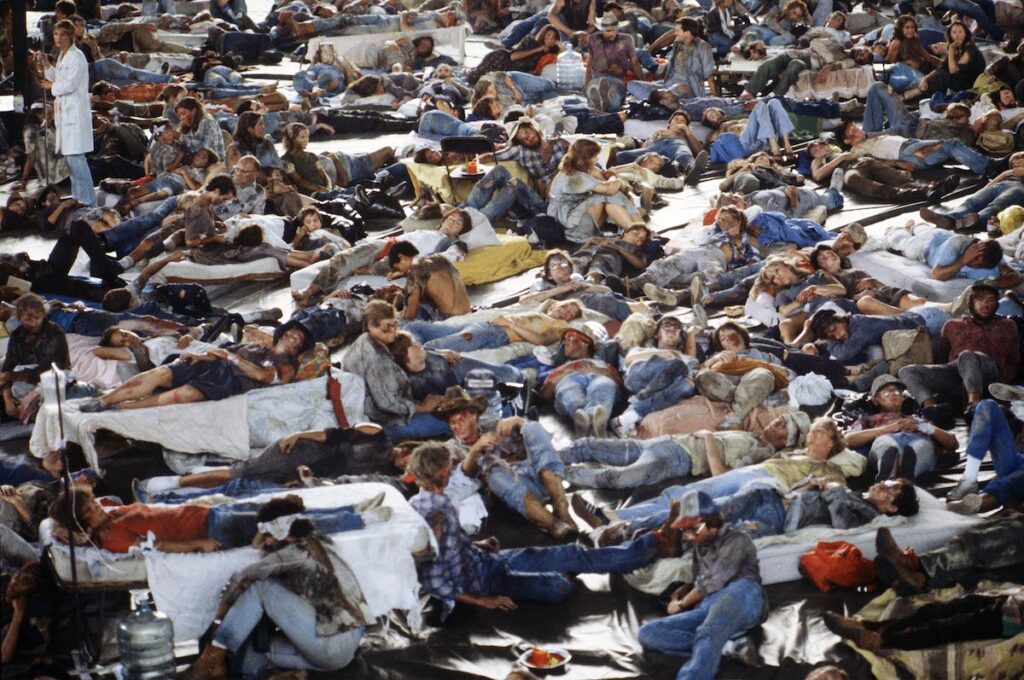New Documentary ‘Television Event’ Proves 1983’s ‘The Day After’ Was More Than Just a TV Movie
A recurrent remark by commentators throughout the doc addresses how most people couldn’t or wouldn’t fathom the all-encompassing severity of a nuclear strike, making ‘The Day After’ all the more effective.

We often hear that art can change the world, but how about a TV movie? A new documentary, “Television Event,” explores that very question as it delves into the production, broadcast, and aftereffects of “The Day After,” a made-for-TV movie about a nuclear attack that aired on ABC in 1983.
A brisk, occasionally superficial examination of the telefilm and the times in which it appeared, the doc confirms the power of culture and its effects on society and politics, even if the network’s primary reasons for pursuing the project were big ratings and making money from advertising, not “making a difference.”
This friction between art and commerce animates many segments of the documentary, such as when we hear of tense meetings between the creative team and the Standards and Practices “sticklers,” or when the dailies — the footage accumulated during a day’s work and reviewed soon afterward — are deemed too dark and not in keeping with television’s traditional bright lighting.
The subject, too, was dark — inherently so — owing to its depiction of the physical, emotional, and societal effects of nuclear war on city folk and farmers living in and around Lawrence, Kansas. Yet the story had been greenlit by ABC executives, including the head of its movie division at the time, Brandon Stoddard, who came up with the idea.

The director of the telefilm, Nicholas Meyer, naturally plays an important role in the documentary and is seen through contemporary interviews and making-of clips and photos. Having directed a couple of major motion pictures by the early ’80s, including “Star Trek II: The Wrath of Khan,” and been nominated for an Oscar for the screenplay of “The Seven-Per-Cent Solution,” Meyer wasn’t quite prepared for all of the network interference, nor was his personality inclined to compromise, as he freely admits on-screen.
Still, his passion for the project comes through, particularly when one watches the movie itself, as I did, and not just the scenes we see in the doc. For though it displays a typical TV-movie bluntness at times and even a certain cheesiness, “The Day After” is also absorbingly grim and humanist, directed with more than a little panache.
Footage of the making of the movie and details brought up about the shoot and the post-production process provide some of the doc’s best moments, such as how its crane shot of a school gym filled with the dying and injured references a similar setup in “Gone With the Wind.” Cast member Ellen Anthony, who lived in Lawrence and had never acted before, is interviewed about her role as a young girl in the film, and the now middle-aged woman’s reminiscences lend the feature some much-needed heart. One wonders, though, why none of the professional actors in the film who are still living, such as John Lithgow, are featured.
Another element from the production that fascinates is its special effects, especially the inadvertent and ingenious way the mushroom clouds that appear during the drama’s harrowing culmination were created. I say “culmination” despite their appearance halfway through the two-hour movie. Yet as its title and the original script’s two-night, four-hour format suggest, the idea of a before-and-after, with the climax occurring around the midway point, was built into the story’s structure from the start, leaving the second half to illustrate the collapse of society. With content this bleak and dispiriting, it’s no wonder many involved in the production doubted it would ever air.
One person who found “The Day After” depressing was President Reagan. More than a month before the broadcast date, the film was screened at Camp David. The president wrote in his diary that he found it to be “effective” — so effective that the White House soon convened a meeting with several advisors and agency chiefs in an effort to coordinate a response.
Many historians and pundits consider 1983 to be one of the most critical years in the final phase of the Cold War, and director Jeff Daniels (no relation to the actor) sketches the geopolitical context quickly, if a bit glibly. A recurrent remark by commentators throughout the doc addresses how most people couldn’t or wouldn’t fathom the all-encompassing severity of a nuclear strike, making the TV movie all the more powerful because it functioned as “a backdoor to people’s consciousness” by beaming into their homes.
In the end, more than 100 million people tuned in to watch “The Day After” on the night of November 20, 1983, and it’s still listed as one of the highest-rated, non-Super Bowl broadcasts of all time. It would go on to be distributed theatrically in many countries, inspire forums and conferences, and even be shown on Russian television.
Mr. Daniels leaves out much in his general survey of the issues surrounding the film, yet the documentary succeeds in demonstrating how it played a crucial role in leading to the Intermediate-Range Nuclear Forces Treaty in 1987. Maybe TV is good for us after all.

